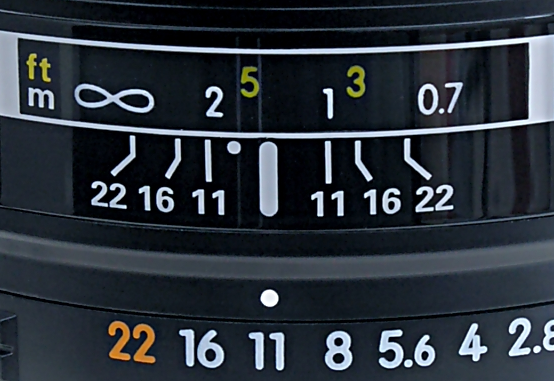Depth of Field
(excerpt from the book Stephen Johnson on Digital Photography unreleased revised electronic version)
Controlling what is in focus or out of focus is a fundamental aspect of photographic interpretation, design and content. Our eyes constantly refocus as we glance around the world making this decision making about focus in photography very different than our human visual experience. Controlling that difference is important.
Depth of Field is the range of distance from the camera that is in acceptable focus. It is controlled by the point in space where the lens is focused in conjunction with the aperture setting in the lens. Generally speaking, wider angle lenses have inherently greater depth of field while longer lenses have shallower depth of field characteristics.
General Concepts
Aperture opening size is the primary control over the depth of focus in the photograph. The smaller the aperture such f16, f22, f32 have greater depth of focus than wider apertures such as f5.6, or f8. As the lens aperture is stopped down (made smaller), the depth of focus will increase in front of and behind the focusing point. A truism is that it increases one unit forward for every two units behind the primary focusing point and although this can be true under some circumstances in others the increase is more symmetrical.
In a carefully controlled depth of field scenario, autofocus is generally not used as you are normally focusing behind the nearest object you need sharp. Instead you count on the inherent depth gained from the aperture you've chosen to bring into focus what you would normally autofocus on.
Sharpness and Depth of Field are Different Qualities
Generally speaking, a lens is sharpest at a few stops down from wide open, as in a 2.8 lens stopped down to 5.6. Even though depth of field increases with very small apertures, these small openings actually soften the image somewhat from diffraction and drop in lens sharpness as you close down the opening. Consequently you should only stop the lens down as far as is needed for the desired depth and avoid knee jerk stopping down to the the smallest aperture hoping for adequate depth. Hope should be replaced with careful calculation of need and aperture characteristics..
Depth of Field Preview Button
For maximum brightness, the camera lens is always kept wide open for your viewing regardless of the aperture you have dialed in. It is only shut down to your chosen aperture during the exposure.
To preview what the actual depth of field characteristics of the scene will be, use the depth of field preview button on your camera to manually stop down the lens to see the focus change from wide open to your chosen aperture. The image will also get dark, so can be hard to see. A technique that works on Canon dSLRs is to press the depth of field button, then stop down or open up the lens until you see the desired focus achieved. This changes the sudden darkening into a more gradual change that can be easier to see.

from Wikipedia. Licensed under the GFDL by the author;
Released under the GNU Free Documentation License.
Lens Depth Scales
Most modern lenses are now made without the essential depth of field scale printed on the lens barrel, and so we have to go through some improvisation to determine the ideal focusing point and the needed aperture to achieve the depth you have in mind.
Many miss having a depth of field scale on our lenses, and truly do want a more manual and precise way of working, leaving autofocus behind, and the optical compromises of zoom lenses as well. Some have turned to a series of fixed focal length lenses from Zeiss, manual focus very well made optics with depth of field scales.

from Wikipedia. Licensed under the GFDL by the author;
Released under the GNU Free Documentation License..
- Focus on the nearest object you need sharp, read the distance on the lens.
- Focus on the most distant point you need sharp, read the distance on the lens.
- Rack the focus to the mid-point between those two points on the lens distance scale. On lenses with a depth of field scale, merely move the focus until the needed range is within the marked f number needed to achieve the depth required.
- Stop down the lens aperture to the smallest number you judge might be needed. This can be guessed at, derived from a depth table for the lens or by using the depth of field preview button.
- Check the new focus characteristic of the composition by stopping down the aperture with the Depth of Field preview button.
- Zoom in on the image preview on the camera LCD screen to inspect the success of your effort.
Hyperfocal Distance
The hyperfocal distance of a lens is the focusing point which will bring into focus the nearest point possible at a given aperture when a sharp infinity focus is also needed. This can be derived from a lens chart, or lens performance calculators whether by smart phone App such as DOF Master or other online or manual tools.
For example, my Canon f4 70-200mm zoomed to 100mm at f11 when focused at its hyperfocal distance of 97 feet will be sharp from 48 to infinity, while at f16 will be in focus from 34 feet to infinity when focused at its hyperfocal distance of 68 feet.
Any lens with a depth of field scale can instantly be set to its hyperfocal distance by aligning the infinity symbol with the desired aperture.

Digital depth of field expansion is discussed in another of my tutorials.

No comments:
Post a Comment